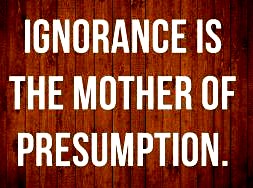Will makers rarely appreciate that there are 3 types of legacies (Gifts In Wills) that can be left in a will: general, demonstrative and specific.
The decision of Celantano Estate v Ross 2014 BCSC 27 discusses the three types of legacies in some detail
Types of Legacies (Gifts In Wills)
[16] There are three types of legacies – general, demonstrative and specific.
General
[17] A general legacy is a gift of something which, if the testator leaves sufficient assets, must be raised by her executor out of her general personal estate. It is a legacy not of any particular thing, but of something which is to be provided out of the testator’s general estate. An example of a general legacy is “I give [pounds] 100 to X”: Wood Estate v. Arlotti-Wood, 2004 BCCA 556 at para. 11.
Specific
[18] A specific legacy is a gift of some particular thing or of some interest, legal or equitable, forming part of the testator’s estate. It must be identified by a sufficient description and separated in favour of the particular legatee from the general mass of the testator’s personal estate. In other words, a specific legacy is a gift of a severed or distinguished part of the testator’s property, thus showing an intention that the property shall pass to the legatee in specie. An example of a specific legacy is “I give my dwelling house, Blackacre, to X” or “I give my silver teaspoons to X”: Wood Estate at para. 11.
[19] The courts lean heavily against identifying a bequest as specific, unless the testator clearly expresses such an intention: Smith Estate (Re), 2003 SKQB 361.
[20] In Wood Estate, the will directed the trustee of the estate:
TO PAY any cash or TRANSFER any stocks and bonds held in account no. 861-16199-1-0 located at RBC Dominion Securities, Vancouver, B.C. into ten (10) equal parts …
[21] Difficulty arose because shortly after the will was executed, the testator transferred his investments from RBC Dominion Securities to a different broker.
[22] The Court of Appeal found this gift to be a specific legacy. They found it to be a gift in specie of the actual contents of the account, identifiable not by sum or number of shares, but only by the broker’s name (RBC Dominion Securities) and account number. The court held that it was not a demonstrative legacy because it was not possible to say that the gift “was to be paid ‘primarily but not solely’ out of the account “: para. 13.
[23] In Re Culbertson, the testator made 31 bequests in varying amounts totalling $24,750.00. The will then indicated:
I direct that each of the above legacies shall be paid out of the money realized from the sale of my farm lands, and if the amount recovered from the sale of my farm lands should not be sufficient to cover the full amount of the said legacies, then each person shall take a proportionate share in accordance with the amount he would have received if the full amount of the legacy had been realized.
[24] The Saskatchewan Court of Appeal found these legacies to be specific. The court found that the language used by the testator, given its natural and ordinary meaning, limited the payment of the legacies to the fund to be realized from the sale of his farmlands. He gave direct instructions that the legacies would abate if the fund proved insufficient.
Demonstrative
[25] A demonstrative legacy shares characteristics of both general and specific legacies. It is in the nature of a specific legacy in that it is a gift of a specified amount or quantity which is directed to be satisfied primarily out of a particular fund or asset. It is in the nature of a general legacy, in that it could be paid out of the general estate if the specified fund falls short. An example of a demonstrative legacy is: “I give [pounds] 100 to be raised out of the sale of my Surrey properties”; Wood Estate at para. 12.
[26] The Saskatchewan Court of Appeal, in Re Culbertson, described a demonstrative legacy at paras. 8 and 10 as follows:
[8] The definition of a demonstrative legacy and its nature are clearly set out by the learned author of Williams on Executors& Administrators, 13th ed., vol. 2, pp. 610-11, as follows:
A legacy of quantity is ordinarily a general legacy; but there are legacies of quantity in the nature of specific legacies, as of so much money, with reference to a particular fund for payment. This kind of legacy is called a demonstrative legacy: the testator, after making a positive gift, points out the particular fund which he desires to have first applied, and which he supposes to be adequate for the purpose. If the fund indicated is not adequate, the gift is intended to take effect nevertheless out of some other property of the testator. Such a legacy is general in that if the fund is called in or fails the legatee will not be deprived of his legacy, but will be permitted to receive it out of the general assets; it is specific in that it will not be liable to abate with general legacies upon a deficiency of assets, provided the fund from which it is primarily to be taken is not exhausted.
…
[10] I think it is clear that if a bequest, general in form, but, as stated by the learned author of Williams on Executors & Administrators, supra, in the nature of a specific legacy relating to a particular fund for payment, is to be declared a demonstrative legacy, the will must disclose:
(1) that recourse for payment of the legacy is first to the fund, and,
(2) there is no expressed intention of the testator precluding satisfaction of the legacy out of some other property of the testator, if the particular fund proves inadequate.
[27] In Re Atkins, [1912] O.J. No. 363, the court found the following bequest to be a demonstrative legacy:
(3) To my relatives in England I leave one thousand dollars in equal shares to the following persons, … these amounts to come from the Savings Bank account, together with any expenses in this connection with this division.
[28] Some years following the execution of the will, the testator closed the Savings Bank account and deposited the money in a different bank. In finding this bequest to be a demonstrative legacy, the court described it as “a legacy of quantity in the nature of a specific legacy as of so much money, with reference to a particular fund for payment”, but which will not adeem if the particular fund no longer exists: para. 12.
[29] In Warren (Re), 54 O.L.R. 433, the court held that a value of stock in a named company was a demonstrative legacy. The clause in the will at issue read as follows:
“(4) To make over and assign to our adopted son George Warren $10,000 worth of capital stock of the Thomas Warren Knitting Company Limited.”
[30] The difficulty in interpretation of that clause was the meaning to be given to the word “worth”. At the time of the testator’s death, the stock was actually worth less than par. In concluding that it was not a specific legacy, the court observed that the testator nowhere used the word “my” or any other expression which indicated that he was referring to any specific stock, which he then possessed. In construing the legacy as demonstrative, the court took note that George Warren was, after the deceased’s widow, the main beneficiary.
Further reading on legacies left in wills
Children Born After Death of the Testator
What Makes It a Will?
Wills Drafting: The Myth of the “Simple Will”



 Resulting Trust Presumption
Resulting Trust Presumption